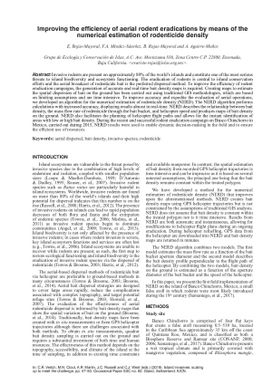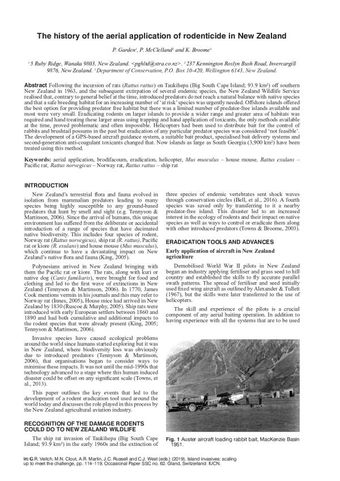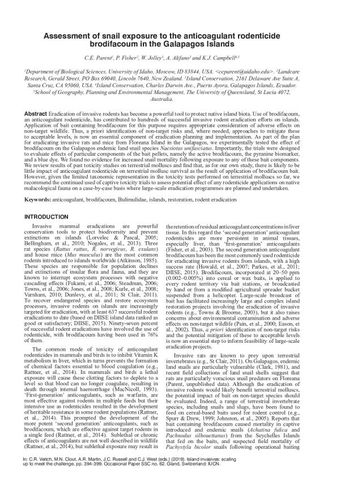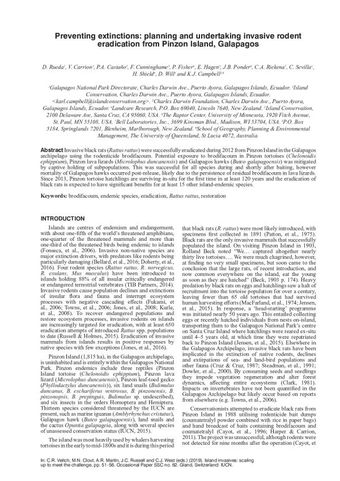Improving the efficiency of aerial rodent eradications by means of the numerical estimation of rodenticide density
- Description:
- Invasive rodents are present on approximately 80% of the worlds islands and constitute one of the most serious threats to island biodiversity and ecosystem functioning. The eradication of rodents is central to island conservation eff orts and the aerial broadcast of rodenticide bait is the preferred dispersal method. To improve the efficiency of rodent eradication campaigns, the generation of accurate and real-time bait density maps is required. Creating maps to estimate the spatial dispersion of bait on the ground has been carried out using traditional GIS methodologies, which are based on limiting assumptions and are time intensive. To improve accuracy and expedite the evaluation of aerial operations, we developed an algorithm for the numerical estimation of rodenticide density (NERD). The NERD algorithm performs calculations with increased accuracy, displaying results almost in real-time. NERD describes the relationship between bait density, the mass fl ow rate of rodenticide through the bait bucket, and helicopter speed and produces maps of bait density on the ground. NERD also facilitates the planning of helicopter fl ight paths and allows for the instant identification of areas with low or high bait density. During the recent and successful rodent eradication campaign on Banco Chinchorro in Mexico, carried out during 2015, NERD results were used to enable dynamic decision-making in the fi eld and to ensure the efficient use of resources.
- Display date:
- 2019
- Collections:
- Secretariat of the Pacific Regional Environment Programme (SPREP)
- Publisher:
- International Union for Nature Conservation (IUCN)
- Content partner:
- Secretariat of the Pacific Regional Environment Programme (SPREP)
- Availability:
- Not specified
-
Copyright status: All rights reservedFind out more about what you are able to do with this itemThis item is all rights reserved, with means you'll have to get permission from Secretariat of the Pacific Regional Environment Programme (SPREP) before using it. For more information, please see our use and reuse page.What can I do with this item?Non-infringing useNZ copyright law does not prevent every use of a copyright work, and this item may be hosted by an international institute or organisation. You should consider what you can and cannot do with a copyright work.No sharingYou may not copy and/or share this item with others without further permission. This includes posting it on your blog, using it in a presentation, or any other public use.No modifyingYou are not allowed to adapt or remix this item into any other works.No commercial useYou may not use this item commercially.
Related items
Welcome and warm Pasifik greetings
The information on this site has been gathered from our content partners.
The names, terms, and labels that we present on the site may contain images or voices of deceased persons and may also reflect the bias, norms, and perspective of the period of time in which they were created. We accept that these may not be appropriate today.
If you have any concerns or questions about an item, please contact us.



